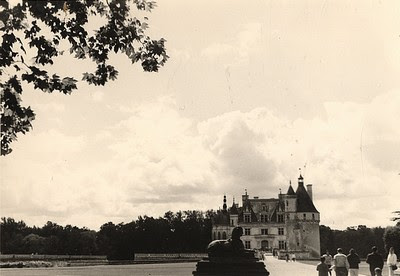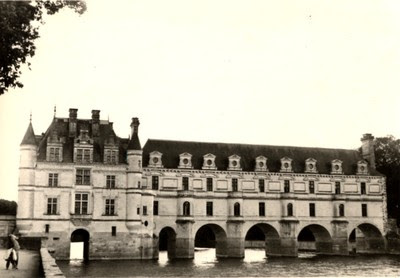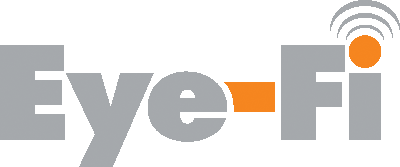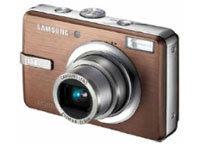


 Photos des années 50-60 du chateau de Chenonceau en Indre-et-Loire (c) Collection Photo Gautier Willaume - Tous droits réservés
Photos des années 50-60 du chateau de Chenonceau en Indre-et-Loire (c) Collection Photo Gautier Willaume - Tous droits réservés


 Photos des années 50-60 du chateau de Chenonceau en Indre-et-Loire (c) Collection Photo Gautier Willaume - Tous droits réservés
Photos des années 50-60 du chateau de Chenonceau en Indre-et-Loire (c) Collection Photo Gautier Willaume - Tous droits réservés (c) Collection Photo Gautier Willaume - Tous droits réservés Le pont de Valentré date du XIVe siècle. Il a fêté ses 700 ans en 2008. C'est bien sûr un élément central du patrimoine architectural et historique de Cahors, dans le département du Lot.
(c) Collection Photo Gautier Willaume - Tous droits réservés Le pont de Valentré date du XIVe siècle. Il a fêté ses 700 ans en 2008. C'est bien sûr un élément central du patrimoine architectural et historique de Cahors, dans le département du Lot.

 This stylish and modern digital picture frame features a sleek black frame surrounding the high quality 7-inch TFT display to showcase clear sharp images. In addition, all frame functions can be easily accessed via the frame’s remote control. “As with our entire line of digital picture frames, our newly introduced 7-inch digital picture frame has been designed to make viewing and sharing of digital photographs easier than ever before,” said Johannes Bockemuehl-Simon, JOBO’s CEO. “This elegant and versatile new digital frame is sure to fit in with any décor at home on the family room wall or in the office on a desk.”
This stylish and modern digital picture frame features a sleek black frame surrounding the high quality 7-inch TFT display to showcase clear sharp images. In addition, all frame functions can be easily accessed via the frame’s remote control. “As with our entire line of digital picture frames, our newly introduced 7-inch digital picture frame has been designed to make viewing and sharing of digital photographs easier than ever before,” said Johannes Bockemuehl-Simon, JOBO’s CEO. “This elegant and versatile new digital frame is sure to fit in with any décor at home on the family room wall or in the office on a desk.”
Category > Photography sponsorship
TNT has extended its corporate sponsor contract with World Press Photo for another three year period.
This was announced in Davos yesterday where Tim Hetherington, the winner of the World Press Photo of the Year 2007, gave a key note speech during the annual dinner in honour of the World Food Programme in front of sixty world and business leaders of which among others former Secretary-General of the United Nations Kofi Annan and Prime Minister Odinga of Kenya. In his speech Mr Hetherington stressed the important role photojournalism has in creating global awareness for situations in the world such as famine and global warming.
TNT has been a global corporate sponsor of World Press Photo since January 2003. As an international company with over 161,000 staff worldwide, TNT demonstrates its interest in the globe's major challenges and its efforts to help fight against world hunger, poverty, and global warming.
Peter Bakker, CEO of TNT, says: "TNT is a people's business and it cares about what goes on in the world. Sponsorship of World Press Photo is part of the company's social responsibility. TNT wants to make a difference, and making a difference begins with awareness. That is one of the main virtues of photo journalism."
Pieter Broertjes, chairman of World Press Photo, says: "We depend on support from the private sector as a non-profit organization. TNT chooses - by extending one of the main sponsor contracts of World Press Photo - not only to support the work of professional press photographers, but also to expand their commitment to social responsibility by highlighting the importance of the principle of freedom of the press. World Press Photo is proud to have TNT as a partner."


 Cet outil, accompagne entre autres les utilisateurs en entreprise, lors de changement des moyens d’impression. La réussite du déploiement d’une nouvelle infrastructure d’impression passe automatiquement par la compréhension, l’adhésion et la participation active de tous les collaborateurs aux nouvelles méthodes de travail et d’impression. « La responsabilité environnementale est avant tout liée à l’éducation et au comportement individuel », explique Dominique Ortoli, Responsable des programmes environnementaux chez Lexmark France. « Mais avant d’espérer changer les habitudes d’impression des utilisateurs, ceux-ci doivent être conscients de l’impact de leurs comportements. D’après une étude Ipsos menée pour Lexmark, 90% des employés européens sont préoccupés par l’impact de leurs impressions sur l’environnement » [1]
Fondé sur les résultats de l’analyse du cycle de vie d’une imprimante multifonction laser Lexmark [2], l’éco-simulateur calcule automatiquement l’impact environnemental de l’impression et le convertit en cinq indicateurs significatifs : le réchauffement climatique (dans le cas des imprimantes, il s’agit pratiquement uniquement de l’empreinte carbone), l’épuisement des ressources non renouvelables, l’énergie primaire, la pollution à l’ozone et la toxicité de l’eau.
Cet outil, accompagne entre autres les utilisateurs en entreprise, lors de changement des moyens d’impression. La réussite du déploiement d’une nouvelle infrastructure d’impression passe automatiquement par la compréhension, l’adhésion et la participation active de tous les collaborateurs aux nouvelles méthodes de travail et d’impression. « La responsabilité environnementale est avant tout liée à l’éducation et au comportement individuel », explique Dominique Ortoli, Responsable des programmes environnementaux chez Lexmark France. « Mais avant d’espérer changer les habitudes d’impression des utilisateurs, ceux-ci doivent être conscients de l’impact de leurs comportements. D’après une étude Ipsos menée pour Lexmark, 90% des employés européens sont préoccupés par l’impact de leurs impressions sur l’environnement » [1]
Fondé sur les résultats de l’analyse du cycle de vie d’une imprimante multifonction laser Lexmark [2], l’éco-simulateur calcule automatiquement l’impact environnemental de l’impression et le convertit en cinq indicateurs significatifs : le réchauffement climatique (dans le cas des imprimantes, il s’agit pratiquement uniquement de l’empreinte carbone), l’épuisement des ressources non renouvelables, l’énergie primaire, la pollution à l’ozone et la toxicité de l’eau. 
Empreinte Carbone de l’imprimante Multifonction Lexmark X646dte tout au long de son cycle de vie (Source : ACV réalisée par BIO Intelligence services en 2008) Concrètement, l’éco-simulateur pose dans un premier temps une question simple à l’utilisateur : Combien de pages imprimez-vous par jour ? A l’étape suivante, l’utilisateur se retrouve face à des choix d’utilisation en matière d’impression : - impression recto/ verso versus impression simple page ; - impression de plusieurs pages en une ; - utilisation de cartouches très haute capacité versus cartouches de capacité standard ; - impression en mode brouillon ; - recyclage des cartouches par Lexmark versus pas de recyclage des cartouches. A chaque action, l’éco-simulateur reprend les données de l’Analyse Cycle de vie pour calculer l’impact environnemental de chaque indicateur significatif cité plus haut. Les résultats sont alors remis dans leur contexte en comparant l’impact de l’impression dans l’entreprise en indicateurs simplifiés et facilement compréhensibles tels que le nombre de kilomètres parcourus en voiture ou la consommation de pétrole brut. L’utilisateur peut ainsi visualiser directement l’impact positif de ses nouveaux comportements d’impression sur l’environnement.

« Lexmark a créé l’éco-simulateur pour répondre à ces problématiques et ainsi aider les entreprises à imprimer moins et gagner plus, mais aussi afin de pouvoir déterminer plus précisément les efforts environnementaux à réaliser en priorité », ajoute Dominique Ortoli. « Même si, comme le montre l’étude Cycle de Vie, l’impact le plus important est celui du papier, la stratégie de Lexmark est de s’engager à réduire à chacune des étapes du cycle de vie de ses produits, la consommation des ressources (eau, énergie…), les émissions (de CO2 et de gaz à effet de serre) et des déchets. »
L’eco-simulateur peut facilement être intégré comme outil de communication interne chez les clients (outil téléchargeable sur l’écran d’ordinateur de leurs collaborateurs ou bien sur leur intranet). Pour plus d'informations : http://www.lexmark.fr/
[1] L’étude a été menée par téléphone et sur Internet du 24/10/07 au 17/11/07 auprès d’un échantillon de salariés représentatifs des pays suivants: France, Allemagne, le Royaume-Uni, Espagne, Italie, Suède, Norvège, Danemark, Autriche, Belgique, Pays-Bas, Pologne et Portugal. [2] L’évaluation du cycle de vie a été effectuée par Bio Intelligence services conformément aux normes ISO 14040 et 14044, puis contrôlée et certifiée par TNO. L’analyse du Cycle de Vie (ACV) a été calculée en utilisant un scénario de référence pour l’imprimante multifonction X646dte. - Utilisateur professionnel Européen - Impression de 8000 pages par mois pendant 5 ans - Mode d’impression : recto, une page imprimée par feuille de papier - Cartouches : nouvelles cartouches Lexmark à haut rendement avec un toner au niveau de densité maximal - Fin de vie des cartouches : 8% réutilisées, 25% recyclées, 67% traitées sous forme de déchets municipaux
Illustrations (c) Lexmark - Tous droits réservés - Lexmark et le losange Lexmark sont des marques de Lexmark International, Inc., déposées aux États-Unis et/ou dans d’autres pays.


The Kodak Zx1 Pocket Video Camera will be available from Spring 2009, and retail for US$149.95 MSRP.
Photo (c) Eastern Kodak, All rigts reserved - http://www.kodak.com/
Available at US$399.95 MSRP from Spring, 2009.



dread is installed in two adjacent rooms. The first houses five, small bronze figures on pedestals spaced about the room. Enter the second room to see the film, projected large so as to evoke the scale of the environment the characters inhabit: a real world place created using sequenced still photographs. But unlike the real world, music notes replace ambient sounds. Composed by the artist, each character has its own “soundtrack.” dread follows philosophers Jean-Jacques Rousseau and Blaise Pascal on something of a nature walk. They encounter flora and fauna, and engage in conversation about existence, God, and nature; in the end, they encounter Dread.
This exhibition is organized by Associate Curator Jenelle Porter, and is accompanied by a fully illustrated catalogue.
The exhibition catalogue has been supported by the generous sponsorship of Barbara B. & Theodore R. Aronson. Additional funds for the catalogue have been provided by The Pew Center for Arts and Heritage through the Pew Fellowships in the Arts. ICA is also grateful for exhibition support from the Harpo Foundation and Goldberg Foundation. Additional funds for the exhibition have been provided by David & Gerrie Pincus; The Horace W. Goldsmith Foundation; the Commonwealth of Pennsylvania Council on the Arts; The Dietrich Foundation; Inc.; the Overseers Board for the Institute of Contemporary Art; friends and members of ICA; and the University of Pennsylvania. On behalf of the artist, the ICA would also like to thank the following for support of the project: The Pew Center for Arts and Heritage through the Pew Fellowships in the Arts, the Donald Young Gallery, Chicago, and the Dean’s Office and the Overseers Special Projects Fund of the School of Design, University of Pennsylvania.
Click here for a short biography of Joshua Mosley and about Joshua Mosley: American International, exhibition at the Indianapolis Museum of Art, March 12 - August 29, 2010


Au sommaire de KBA Process 5 – Impression sur plastiques et complexes
Dans ce numéro :
Editorial de Ralf Sammeck [p. 2] Plastiques - De nouveaux supports pleins d’avenir : PVC, PE, PP, PET, par Klaus Fisher et Cornelia Lillenund [p. 3] Plastiques - Fabrication des bandes plastique : PVC rigide, propriétés, par Frank Wassmann [p. 5] Plastiques - Le polyester – Une polyvalence exemplaire, par Dieter Kleeberg [p. 8] Plastiques - Etiquettes in-mould en film de polypropylène pour l'offset feuilles, par Wilfrid Tews [p. 10] Imprimabilité - Déterminer facilement la tension superficielle des films plastique, par Beatrix Genest [p. 12] Imprimabilité - Accroître la tension superficielle grâce à une tour Corona, par Dieter Kleeber et Matthias Lange [p. 14] Machinabilité - Dispositifs de désélectrisation pour presses offset feuilles, par Wolfgang Zierhut [p. 16] Encres et vernis - Encres à base d’huiles et à séchage UV pour l’impression sur film plastique, par Peter Psotta, Walter J. Bolliger, Marc Larvor et Olivier Deage [p. 18] Encres et vernis - Vernissage des films plastique avec vernis à séchage UV en offset feuilles, par Mark Fregin [p. 21] Applications - Les clients KBA conquièrent de nouveaux segments : exemples [p. 23] Applications - L’impression lenticulaire, clé de marchés de niche prometteurs, par Birgit Grosse et Peter Schmidt [p. 27] Glossaire des matières plastiques, par Dieter Kleeberg [p. 29] Ressources et partenaires [p. 30] Adresse bibliographique [p. 31]
Téléchargez gratuitement ce numero disponible en français, anglais, espagnol et italien sur www.kba.com

Le dernier numéro de la revue KBA Process - publiée par le constructeur Koenig & Bauer et consacrée aux technologies des procédés - est intitulé « Impression sur plastiques et complexes ». Ce numéro intéressera en premier lieu toutes les entreprises qui impriment sur films plastique et papiers synthétiques, complexes associant papier, plastique et matériaux synthétiques. Il fait le point sur les diverses possibilités à leur disposition pour différencier visuellement leurs produits ou leur conférer une plus grande valeur ajoutée. Sa vocation est d’être à la fois une source d’inspiration ainsi qu'un guide décisionnel pour les entreprises graphiques désireuses d’investir à l’avenir dans ce secteur... et un support de publicité pour KBA.
Pionniers de l’impression UV et sans eau, KBA et KBA-Metronic ont acquis une grande expertise qui s’étend également à l’impression de supports à surface non absorbante tels que plastiques et aluminium. En coopération avec des entreprises partenaires, des solutions innovantes ont été mises au point pour ce marché en plein essor. En font partie notamment le module Impression plastique, la tour Corona ou encore les sécheurs UV intermédiaires assurant le séchage en douceur des supports sur les presses Rapida. Les solutions Metronic permettent l’impression directe sur les objets en plastique comme les cartes au format ISO, CD, DVD et autres. Comme dans les éditions précédentes de KBA Process, la parole est donnée dans ce nouveau numéro aux partenaires de KBA, cette fois des spécialistes du domaine des films polymères, des encres et vernis UV, des étiquettes in-mould, de l’électrostatique et du traitement des surfaces. La revue couvre ainsi un large éventail thématique, de la fabrication des différents plastiques et leurs qualités au traitement de surface, à la désélectrisation jusqu’à l’impression, au vernissage et au séchage. Deux articles s’intéressent également aux nouveaux domaines d’activité issus de l’impression sur plastique.
Lien : Sommaire de la revue KBA Process 5 est envoyé aux personnes intéressées par le service marketing de KBA à Radebeul. Veuillez vous adresser à Ilka Demuth ou Barbara Henschel (ilka.demuth@kba.com ou barbara.henschel@kba.com) pour obtenir votre exemplaire personnel. Certains numéros précédents de KBA Process sont également encore disponibles. Vous trouverez en outre le numéro actuel ainsi que toutes les éditions précédentes en ligne sur le site internet de KBA http://www.kba.com/ à la rubrique News & Presse\Presseservice\KBA Process. Photo (c) KBA - Tous droits réservésPrincipales caractéristiques
Liens vers les messages sur les autres compacts argentiques Werlisa :
Photo (c) Propoint S.L. - Tous droits réservés - http://www.werlisa.com/2009/

Liens vers les messages sur les autres compacts argentiques Werlisa :
Photo (c) Propoint S.L. - Tous droits réservés -
http://www.werlisa.com/2009/
Liens vers les messages sur les autres compacts argentiques Werlisa :
Photo (c) Propoint S.L. - Tous droits réservés -
http://www.werlisa.com/2009/Photo (c) Propoint S.L. - Tous droits réservés - www.werlisa.com/2009/




 Compact Samsung M310W : haute résolution, grand angle et double stabilisation
Compact Samsung M310W : haute résolution, grand angle et double stabilisation
Destiné aux amateurs de photo numérique, le M310W bénéficie des caractéristiques présentes sur les appareils photo numériques les plus haut de gamme: une résolution impressionnante de 13,6 millions de pixels, un double système de stabilisation de l’image, un écran LCD de 2,7 pouces, et surtout un objectif grand-angle de 28mm … le M310W a tout d’un grand!
L’optique grand-angle 28 mm du M310W apporte au photographe la possibilité d’élargir son champ de vision et donc sa créativité. Indispensable au quotidien, le grand angle 28 mm du M310W sert autant pour les clichés de paysages, de groupes, ou des photos d’intérieur quand on n’a pas de recul.
Le M310W offre un grand nombre de caractéristiques et de fonctions ergonomiques et pratiques, comme ses 11 modes scène, le mode autoportrait, la détection du regard et des sourires, la correction automatique des yeux rouges. Il permet également d’enregistrer des vidéos en ayant accès au zoom optique tout en bénéficiant de la stabilisation, et de faire ensuite de nombreux montages vidéo directement sur son appareil photo. Autre innovation qui intéressera assurément les mannequins en herbe : le mode Beauté, qui permet de corriger les petites imperfections du modèle en ne retouchant que son visage.
Enfin, pour les débutants, le M310W offre la Description des fonctions à l’écran et un Guide Photo disponible sur la molette des modes, pour une utilisation « éclairée » du fonctionnement de l’appareil photo: plus besoin de consulter le manuel.
Le M310W est disponible en février 2009. Coloris disponibles : chocolat, anthracite et argent. Prix de vente conseillé: 179€.
Photos (c) Samsung Electronics - Tous droits réservés.
« La construction des souvenirs est une part importante et positive de notre vie » commente Jane Dixon, Responsable Marketing Worldwide de ILFORD Imaging Switzerland GmbH, « et partager ces souvenirs est aussi important que les construire. Nous avons donc créé une gamme de solutions d’impression à domicile, pour que le grand public puisse enfin donner vie à ses photos. En les imprimant chez eux, confortablement installés, et en prenant une part active au processus de la création de leurs souvenirs, les utilisateurs y apportent une véritable touche personnalisée ! »
ILFORD Photo Album Kitest distribué en France par Lumière Imaging. Prix public conseillé : 19,95€
A propos d'Ilford -- A propos de Lumière ImagingAutres messages du blog sur Ilford Ilford Discovery Pack Profils ICC Ilford à télécharger gratuitement Gamme Ilford Inkjet Photo Paper Site de production Ilford de Marly
D'autres messages sur les produits Ilford sont bien sûr à venir :) Autres messages récents du blog Listening With Empathy - Rubrique Pressbook Compact Photo Samsung ST50 Compact Photo Samsung WB500 Photos anciennes - Vintage Photographs Ken Browne Sociology for AS AQA - Rubrique Pressbo... Photos anciennes - Vintage photos Anciennes Photos Vintages pictures Photos anciennes - Vintage Photographs Photoshop CS4 Channels and Masks One-on-One Photoshop CS4 The Missing Manual Sony Cyber-shot DSC-G3 digital still camera Resolve to Do Good Design in 2009 Graffiti Art Photos from Marseille and Barcelona HP iPrint Photo for iPhone or iPod Lighting Techniques for Middle Key Portrait Photog... Route 66 Abandoned The Photography of Edward J Man... Gorges du Verdon - Haute-Provence Lac de Genève - Lac Léman Arizona - 2008 By Nachama Soloveichik Utah - Photographs by George Corbin Exposition des photographies des lauréats de la Bourse du Talent 2008 à la Bibliothèque François Mitterrand - Paris - jusqu'au 22 février 2009 Femmes face à la guerre, une exposition de 80 portraits de femmes en noir et blanc de Nick Danziger au Théâtre de la Photographie et de l’Image de Nice jusqu'au 22 février 2009 Illustration (c) Ilford - All rights reserved